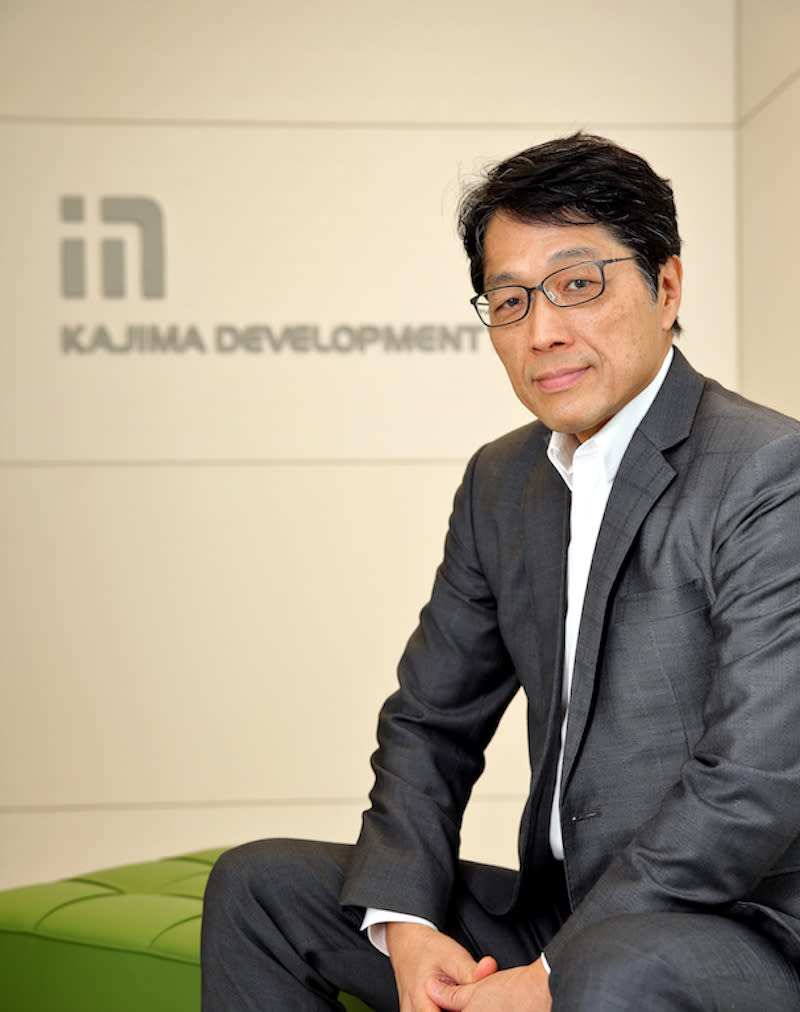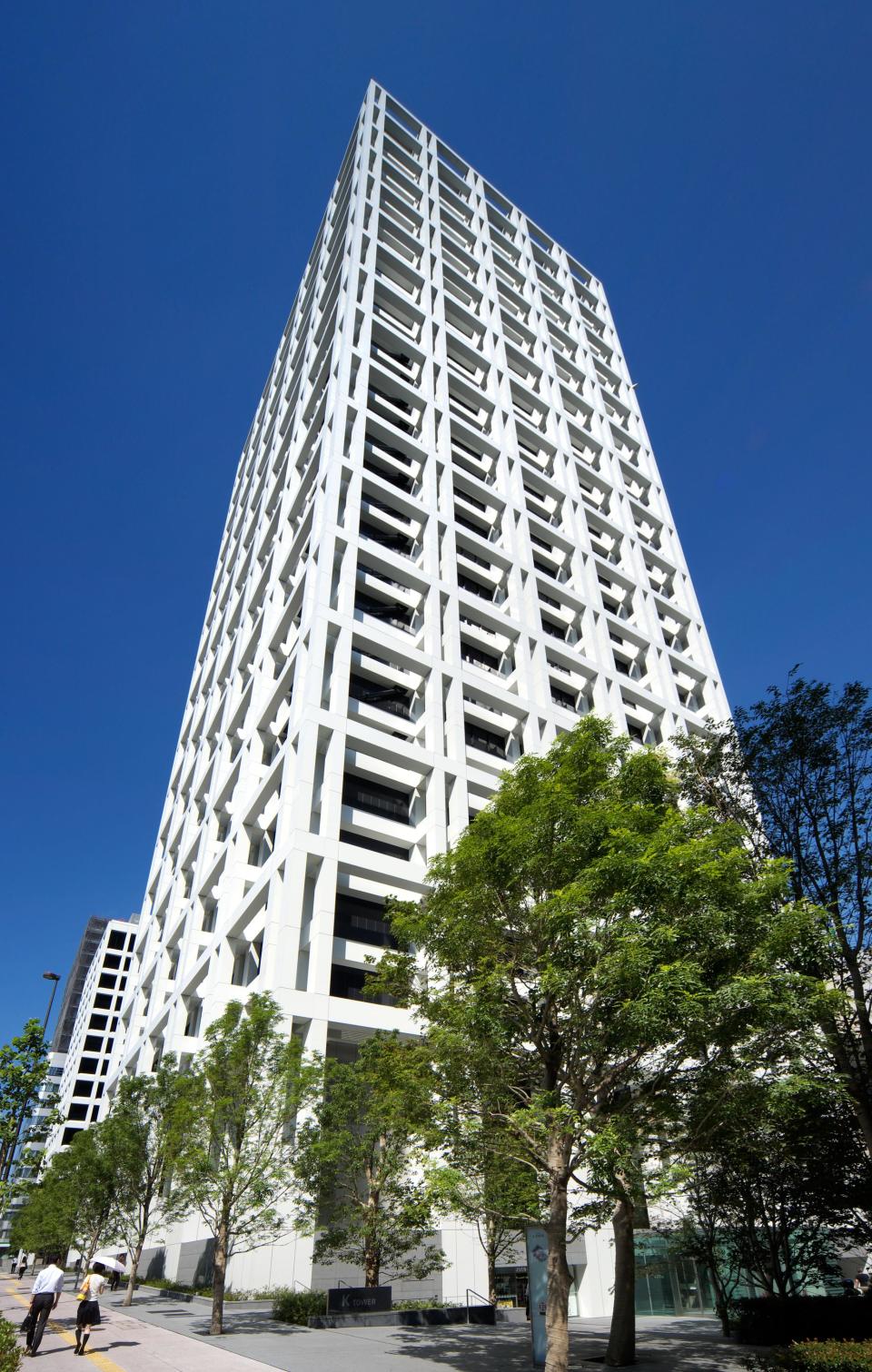Kajima leverages rich history, multi-disciplinary expertise
The Japanese firm is developing its first billion-dollar integrated development in Singapore. It is bringing its 179-year history to bear with its track record in building high-speed rail lines, suspension bridges, tunnels and integrated developments in Japan and elsewhere.
Kajima Corp has made a third attempt to crack the Singapore residential property market, after two earlier attempts in the last residential property boom of 2006-2007. Both projects were luxury, freehold condos in prime Districts 9 and 10. The first foray was the 40-unit, boutique, high-end development Sui Generis on Balmoral Road in District 10. Singaporean tycoon Peter Lim purchased 20 units en bloc in Sui Generis for $95 million ($1,934 psf) when it was completed in 2010.
The second development was the 31-unit Bishopsgate Residences located at 1 Bishopsgate. Completed in 2012, the ultra-luxury development contains a mix of three- to five-bedroom apartments, penthouses and triplexes with sizes ranging from 2,433 to 6,841 sq ft. Units in the development have been sold at prices ranging from $3,174 to $3,913 psf. The latest transaction at Bishopsgate Residences was for a 2,949 sq ft, four-bedroom unit on the first level that was sold early this month for $9.5 million ($3,221 psf).

Artist's impression of the upcoming Woodleigh Residences, integrated with The Woodleigh Mall and co-located with the Woodleigh MRT Station, bus interchange and community club with childcare centre (Pictures: Kajima Corp)
Billion-dollar integrated development in Singapore
This third time, it has chosen Singapore Press Holdings (SPH) as its partner in a 50:50 joint venture and a mixed-use development in an upcoming housing estate – once upon a time a cemetery.
It was the first government land sale (GLS)plot offered for an integrated development in the new Bidadari Estate. Kajima and SPH paid $1.13 billion ($1,181 psf per plot ratio) for it in June 2017.
The joint-venture partners broke ground on the upcoming integrated development in March 2018. It includes a 667-unit condo, namely The Woodleigh Residences; as well as a shopping mall, The Woodleigh Mall, with 301,392 sq ft of commercial and retail space.
“The Woodleigh Residences site is very unique,” says Keisuke Koshijima, executive vice president of Kajima Corporation. “Not only is it an integrated development site, it is also close to both the city centre and nature.”
Koshijima believes that The Woodleigh Residences and The Woodleigh Mall can contribute to, and enhance, the government’s concept of a “Community in a Garden” as part of the master plan for Bidadari Estate. The integrated development caters to multi-generational families, he points out.
Besides the residences and the mall, amenities include a community club with childcare facilities, a viewing deck and link bridge to Bidadari Park, a bicycle park, direct access to the Heritage Walk, as well as a link bridge to Woodleigh Village. There is also a direct connection to Woodleigh MRT Station and bus interchange.
As part of the firm’s “continuous drive to perfect the Japanese craftsmanship in design and quality”, Kajima intends to contribute its technology and experience “to set a new standard” in Singapore’s real estate market, adds Koshijima. “Our development will be synonymous with the kind of Japanese design and quality that you will get in Tokyo.”
The Bidadari integrated development may be Kajima’s first in Singapore in recent years. However, its holding company in Singapore, Kajima Overseas Asia, was the main contractor for the Millenia Singapore mixed-use development by Pontiac Land. Kajima Overseas Asia also took a stake in the project which comprises two Grade-A office towers, namely Millenia Tower and Centennial Tower; two luxury hotels – Conrad Centennial Singapore and The Ritz-Carlton Singapore; as well as Millenia Walk shopping mall, located adjacent to one of the entrances to the underground Promenade MRT Station.

Koshijima: Our [Woodleigh] development will be synonymous with the kind of Japanese design and quality that you will get in Tokyo (Picture Credit: Samuel Issac Chua/EdgeProp Singapore)
Track record
Outside of Singapore, Kajima Corp has experience in developing integrated projects in Japan and other parts of Asia. One of its earliest integrated developments is at Shiki Newtown in Saitama, Japan. The entire development occupies a sprawling site of 258,248 sq m (2.78 million sq ft), with a total gross floor area (GFA) of 354,656 sq m (3.82 million sq ft). It has a mix of commercial and residential components with co-located facilities including the Yanasegawa station, a school, kindergarten and childcare centre, city hall, police centre and a public gym. The project was completed in phases from 1971 to 1988.
One of the recent integrated developments by Kajima in Tokyo is Gran Tokyo, completed in 2014. It sits on a site area of about 19,670 sq m (211,728 sq ft) with a built-up area of 352,000 sq m (3.79 million sq ft). The project contains a department store and two office towers of 42 and 43 storeys in height. The project is linked to the Gran Roof transport square, with a bus terminal and stations to the JR Yamanote Line and other lines.

Gran Tokyo contains a department store and two office towers of 42 and 43 storeys in height. Completed in 2014, the project is linked to the Gran Roof transport square, with a bus terminal and stations to the JR Yamanote Line and other lines
Another integrated development in Tokyo is located at the Akihabara station. Completed in 2006, it has a 22-storey office and retail block (UDX); a 40-storey office tower (Daiburi); and a residential tower with 318 units (TTT). Besides Akihabara station, other co-located facilities include an Industry-university collaboration space, an event space and the Akihabara Information Center.
A third integrated development by Kajima in Tokyo was completed 15 years ago: the Shinagawa Seaside Forest, which sits on a site of 73,000 sq m (785,772 sq ft). The entire development is 510,000 sq m (5.49 million sq ft) with a 23-storey office tower, a hotel, retail space and residences. It is linked directly to the Shinagawa Seaside Station transportation square.

Daikanyama Address The Tower is a 36-storey high-rise condo with a supermarket and retail shops. It is the second tallest tower in Shibuya, and located just a one-minute walk from Daikanyama Station
Meanwhile, in Jakarta, the capital of Indonesia, Kajima undertook and completed Senayan Square in 2015. An urban redevelopment project located on a 188,000 sq m (2.02 million sq ft) land area on the south side of Jakarta, the mixed-use development contains a 1.95 million sq ft shopping mall (Plaza Senayan Arcadia); office towers (Sentral Senayan I & II) with a total of 1.68 million sq ft; the 488-room Fairmont Hotel; and twin residential towers with 204 units (The Apartment Plaza Senayan).
In Myanmar, Kajima Yankin PPP Co, Ltd, a subsidiary of Kajima Overseas Asia, has started work on a mixed-use development in the capital of Yangon. It is expected to be one of the largest single overseas investments made by Kajima, according to the firm in its 2018 corporate report. This mixed-use development features offices, hotels and commercial facilities sitting on a site area of 27,000 sq m (290,628 sq ft) with a total GFA of 170,000 sq m (1.83 million sq ft). The project is on a build-operate-transfer lease.
The concept in Myanmar is “Garden for the People”. Co-located facilities within the integrated development include a library and transportation square. Community support functions include disaster preparedness. There is also a training facility for local construction companies in both the public and private sectors in Myanmar, with access to Kajima’s advanced technologies, experience, and expertise.

The 53-storey Kachidoko The Tower completed in 2016 contains 1,420 apartments, making it the second largest apartment building in Japan in terms of number of units in one building
History spanning 179 years
Kajima’s history goes back to 1840 when it was founded by Iwakichi Kajima as a carpentry business in Edo, present-day Tokyo. Since then, the firm has expanded into construction, civil engineering and property development. Kajima built the first “Western-style” building in Yokohama (Ei-Ichiban Kan) in 1860. It undertook railway construction projects in Korea and Taiwan in 1899. It was involved in many of the reconstruction projects in the aftermath of the Great Kanto earthquake of 1923 and post-war years from 1945.
The firm was also instrumental in the building of Japan’s first nuclear reactor in 1957; the country’s first high-speed line, Tōkaidō Shinkansen – the first phase of the Shinkansen Line connecting Tokyo and Shin-Osaka stations in 1964; many of the facilities for the 1964 Summer Olympics in Tokyo; and construction of the Seikan Tunnel in 1988, the longest tunnel in the world at 53.85km, linking Honshu and Hokkaido.
Kajima has a global presence today. Listed on both the Tokyo and Osaka Stock Exchanges from 1961, Kajima was regarded as the world’s biggest construction company in terms of contract value. In 1964, it established Kajima International Inc in Los Angeles, California. Kajima Europe was set up in the Netherlands in 1987. The following year, Kajima Overseas Asia was formed in Singapore. The firm was listed on the London Stock Exchange in 1990, and in 2003, it opened an office in Shanghai.
In the 1990s, Kajima was involved in the construction of the Kansai International Airport; the Akashi Kaiko Bridge, one of the longest suspension bridges in the world; and the Suez Canal Bridge.
The 2000s saw Kajima involved in the construction of Dubai Metro, the rapid transit network of Dubai, United Arab Emirates; and the $6.59 billion Resorts World Sentosa integrated resort by Genting International in Singapore. Genting announced in April that it will be reinvesting in Resorts World and also looking to gain a foothold in the Japanese market, where there could potentially be three casinos in Yokohama, Osaka and Hokkaido.
Kajima Australia was founded in 2015, with the purchase of Icon Co that year, followed by Cockram Construction in 2017. Kajima gets access to the housing sector through Icon Co. Through Cockram which was founded in 1851, Kajima gained access to the engineering, procurement, and construction management for large pharmaceutical plants and laboratories in China owned by Western and Japanese companies.
“What differentiates us from the others is Kajima Corp’s 180 years of history. We first started off as a contractor who built Japan’s first Western-style building, then expanded into architectural and engineering services, and construction and real estate development globally,” says Koshijima. “Today, our experience spans across four regions – North America, Asia, Europe, and Oceania.”

Akasaka K-Tower is a super high-rise, mixed-use tower developed on the site of Kajima's Corp's former headquarters. The development was completed in 2012
Expansion into real estate development
In its latest annual report for FY2018, Kajima said that it will be leveraging its expertise in planning and design, as well as construction and engineering, to make further inroads into real estate development projects around the world. To that end, it has already invested or committed to invest JPY400 billion ($4.85 billion) in these projects, many of which are already underway.
The firm is capitalising on medium- to long-term trends such as environmentally-friendly buildings, ageing population and more compact apartments, especially in major city centres around the world.
“Over the years, when units got smaller in Japan, the industry developed many techniques and technologies to make smaller spaces ‘bigger’ [through] efficient space maximisation,” says Koshijima.
Although later than Japan, property developers in Singapore have started to build smaller units as land prices soared in recent years. “We believe that we can bring these proven efficient space maximisation technologies from Japan to enhance the living experience in Singapore,” he adds.
See Also:
Singapore Property for Sale & Rent, Latest Property News, Advanced Analytics Tools
Global investors eye office, industrial and logistics real estate in Asia this year
En Bloc Calculator, Find Out If Your Condo Will Be The Next en-bloc

